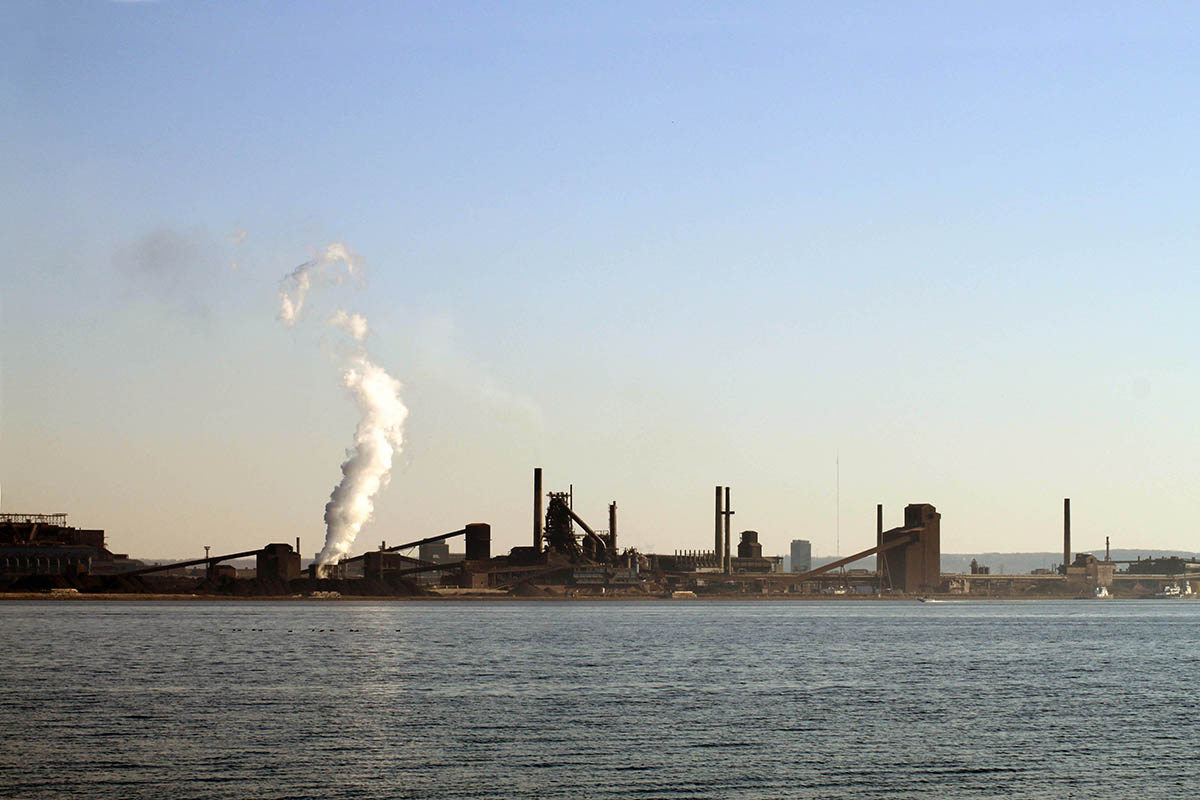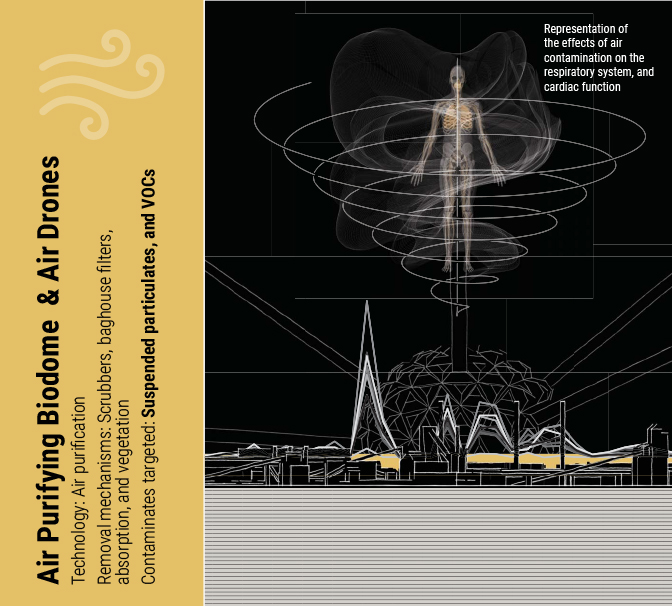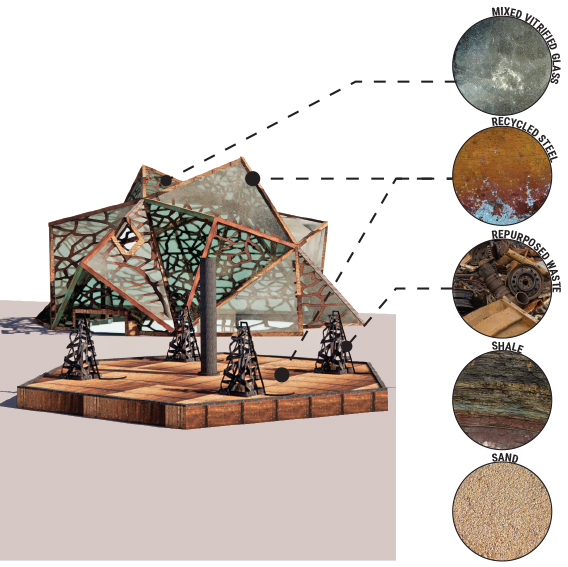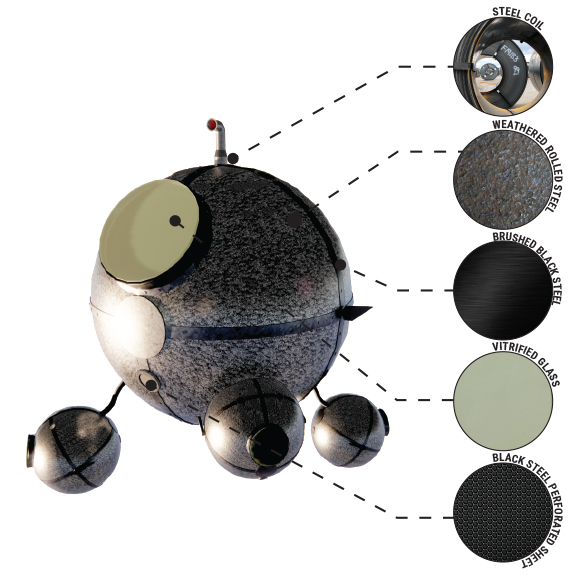ALICIA AHONEN, MArch
Industrial Wasteland:
Revitalization Transcribed
For decades, shipping harbours, industrial developments, and municipal wastes have escalated levels of pollution and contamination in the water, soil, and air. Cumulative effl uence has led to the demise of valuable waterfront cities, and this degeneration has separated urban centres from public accessibility to the water. Hamilton Harbour is the largest contaminated sediment site along the Great Lakes in Canada. The urban waterfront is crucial to Hamilton’s history, both geographically and politically. However, the current industrial recession has caused these lands to degrade: physically, culturally, and architecturally.
This thesis explores a method to revive the waterfront and improve community well-being, through revitalization of the landscape. Architectural intervention provides the means to implement decontamination processes and provide experiential engagement for the public. The objective is to develop a post-pollution, diversifi ed, mixed-use coastline with functional, engaging structures that promote a connection of place between the city and its natural resources.
Industrial Wasteland:
Revitalization Transcribed
For decades, shipping harbours, industrial developments, and municipal wastes have escalated levels of pollution and contamination in the water, soil, and air. Cumulative effl uence has led to the demise of valuable waterfront cities, and this degeneration has separated urban centres from public accessibility to the water. Hamilton Harbour is the largest contaminated sediment site along the Great Lakes in Canada. The urban waterfront is crucial to Hamilton’s history, both geographically and politically. However, the current industrial recession has caused these lands to degrade: physically, culturally, and architecturally.
This thesis explores a method to revive the waterfront and improve community well-being, through revitalization of the landscape. Architectural intervention provides the means to implement decontamination processes and provide experiential engagement for the public. The objective is to develop a post-pollution, diversifi ed, mixed-use coastline with functional, engaging structures that promote a connection of place between the city and its natural resources.











